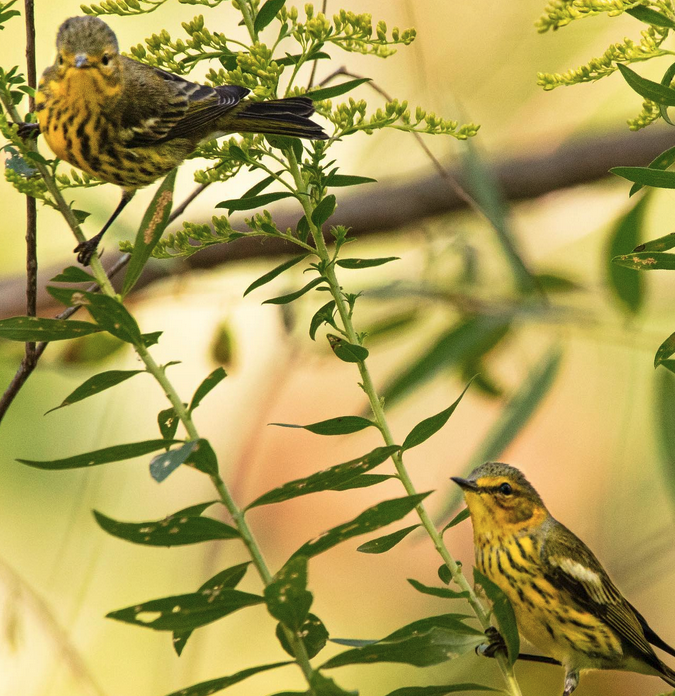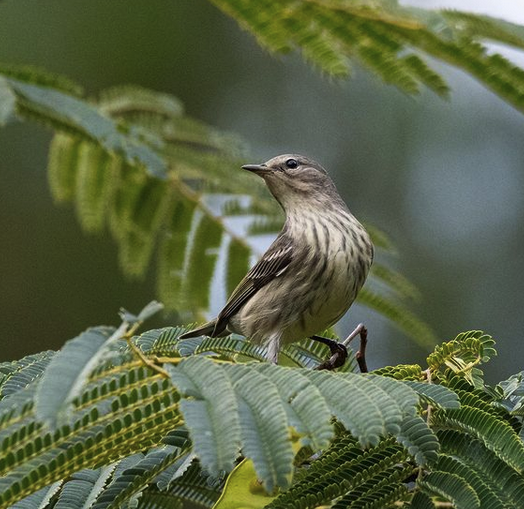By Sally Siko
Happy to spend a couple nice moments last month in Raleigh NC photographing migrating Cape May Warblers.
I love their cheerful bright yellow plumage and spunky personalities.
Though they tend to move quickly through the leaves I enjoy the challenge of trying to grab a few shots.

These lovely warblers were named for the county of Cape May, NJ where the species was first noted in scientific literature.
Sitting at the southern tip of New Jersey, bordering the Delaware Bay and the Atlantic, Cape May county is the premier destination for migrating birds along the east coast of the US.
It’s one of my favorite places to lead birding tours too!
There’s so much to see there warbler-wise that I think it’s pretty cool that there’s actually a species named for such a special place.
Though Cape May Warblers stop in NJ when traveling between their breeding & wintering grounds, they are hardly alone as hundreds of different bird species are found in Cape May county every year during each migration cycles.
It seems like an odd name to give these beauties as it hardly describes any of the species unique characteristics.









Given the Cape May’s preference for nesting & feeding in conifer forests, perhaps a better name might be spruce warbler or maybe even tiger warbler since they sport those bold black stripes on it’s warm yellow breast.
Moniker choice aside, these feathered gems are standout birds in my eyes and I’m always grateful to catch a glimpse of Cape May every autumn.
They’ll stick around NC for another couple weeks so if you’d like to catch a glimpse of one for yourself, get out there this week before they move on down south for the winter.
Photos by @sally_siko of @bestlife_birding captured on my mighty mirrorless monster, the @canonusa #R5









